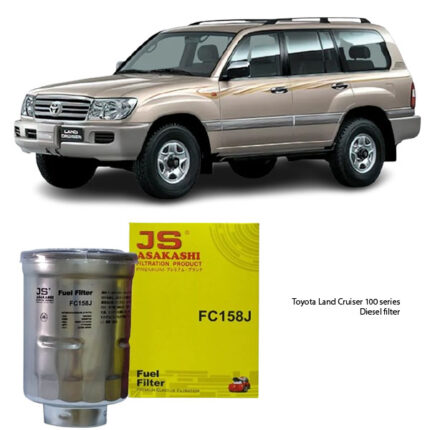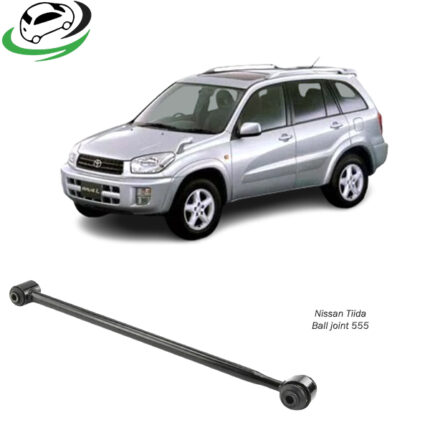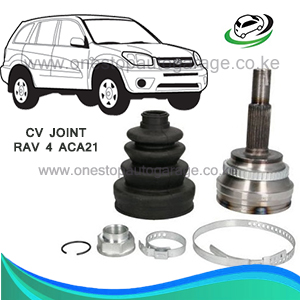-10%
Get CV Joint Constant Velocity Joint 23* 26* 56 GSP RAV-4 ACA 21
A CV (Constant Velocity) joint is a critical component in front-wheel-drive, all-wheel-drive, and some rear-wheel-drive vehicles. It allows power to be transmitted through a variable angle, at constant rotational speed, without an appreciable increase in friction or play. Here’s a breakdown of its function and types:
Function of CV Joints:
- Power Transmission at Variable Angles:
- CV joints are designed to efficiently transmit power from the engine and transmission to the wheels, even when the wheels are at different angles due to steering and suspension movements.
- This capability is crucial for front-wheel-drive and all-wheel-drive vehicles, where the wheels need to move up and down with the suspension and turn left and right with the steering.
- Constant Rotational Speed:
- Unlike universal joints, CV joints maintain a constant rotational speed regardless of the angle, which results in smoother and more consistent power delivery to the wheels.
- This consistency helps prevent the driveline vibrations that are typically associated with varying rotational speeds in universal joints.
- Accommodating Suspension Movement:
- As a vehicle drives over bumps and dips, the suspension moves up and down. CV joints allow the drive shafts to flex with these movements, ensuring continuous power transmission to the wheels.
- This flexibility is vital for maintaining control and traction, especially on uneven surfaces.
- Facilitating Steering:
- In front-wheel-drive vehicles, the CV joints are located on the drive axles that connect the transmission to the wheels. These joints must accommodate the steering motion, allowing the wheels to turn left and right while still transmitting power.
- The outer CV joints (typically Rzeppa joints) handle this task, providing a high degree of angular movement required for steering.
Types of CV Joints:
- Ball-type (Rzeppa Joint):
- Commonly used in front-wheel drive and all-wheel drive vehicles.
- Consists of a spherical inner housing, a series of ball bearings, and an outer housing.
- Allows for a high degree of motion in all directions.
- Tripod-type:
- Often used in the inner side of drive shafts in front-wheel drive vehicles.
- Consists of a three-legged yoke with needle bearings that fit into a housing.
- Primarily accommodates changes in the length of the drive shaft.
Symptoms of a Faulty CV Joint:
Clicking or Popping Noise:
- Description: This is one of the most recognizable symptoms. You may hear a distinct clicking or popping noise when making sharp turns, particularly during low-speed maneuvers.
- Cause: This noise typically arises from the outer CV joint, which is designed to handle the angular changes during turning. If the joint is worn out, it can no longer handle these angles effectively, causing the noise.
2. Vibration During Acceleration:
- Description: Excessive vibration or a shuddering sensation can occur when accelerating, especially at higher speeds.
- Cause: This vibration is often due to an imbalance caused by a damaged or worn CV joint. When the joint becomes excessively worn, it can lead to uneven rotation and vibrations transmitted through the drive shaft.
3. Grease Leakage:
- Description: Visible grease around the wheel area or under the vehicle is a clear sign that the CV boot is damaged.
- Cause: The CV boot, which is a rubber or plastic cover that protects the CV joint, can crack or tear, allowing grease to escape. When the grease leaks out, it leaves the joint unprotected, leading to accelerated wear and potential joint failure.
4. Knocking Sound:
- Description: A constant knocking or thumping sound while driving straight can also indicate CV joint issues.
- Cause: This sound can occur if the inner CV joint is damaged or if there is excessive play in the drive shaft. Unlike the clicking noise during turns, the knocking sound persists regardless of steering direction.
5. Unusual Steering Response:
- Description: Difficulty in steering or feeling an unusual heaviness or looseness in the steering wheel may occur.
- Cause: This symptom might be less direct but can result from the impact of a failing CV joint on the overall drivetrain performance and handling.
6. Handling Issues:
- Description: Noticeable changes in handling, such as a pull to one side or an unstable feeling while driving, can occur.
- Cause: Damaged CV joints can affect the alignment and balance of the wheels, leading to handling problems.
7. Suspension Noise:
- Description: Rattling or clunking noises from the suspension, especially when going over bumps, can be related to CV joint issues.
- Cause: While the CV joint itself might not be the only component affected, a failing joint can contribute to abnormal sounds due to the interplay with the suspension system.
Maintenance:
- Regular Inspection:
- Regularly inspect CV boots for any signs of wear or damage.
- Look for grease leakage or cracks in the boots.
- Timely Repairs:
- Replace damaged CV boots promptly to prevent contamination and damage to the joint.
- Address any unusual noises or handling issues as soon as they arise.
- Proper Greasing:
- Ensure that CV joints are adequately greased and that the grease is not contaminated.
- Alignment Checks:
- Regularly check and maintain proper wheel alignment to prevent additional strain on the CV joints.
Diagnostic Steps:
- Visual Inspection:
- Check for torn or cracked CV boots and visible grease leakage.
- Look for any abnormal wear patterns or damage on the CV joint and surrounding components.
- Noise Test:
- Drive the vehicle and listen for clicking or popping sounds during sharp turns.
- Note if vibrations or knocking sounds are present during acceleration or while driving straight.
- Drive Shaft Check:
- Inspect the drive shaft for any noticeable play or movement, which could indicate joint issues.
- Check for any unusual movement or imbalance while the vehicle is in motion.
- Professional Inspection:
- If you suspect a faulty CV joint, a professional mechanic can perform a thorough inspection, often involving lifting the vehicle and rotating the wheels to check for play or noise in the CV joints.
Follow us on Facebook for more parts.



